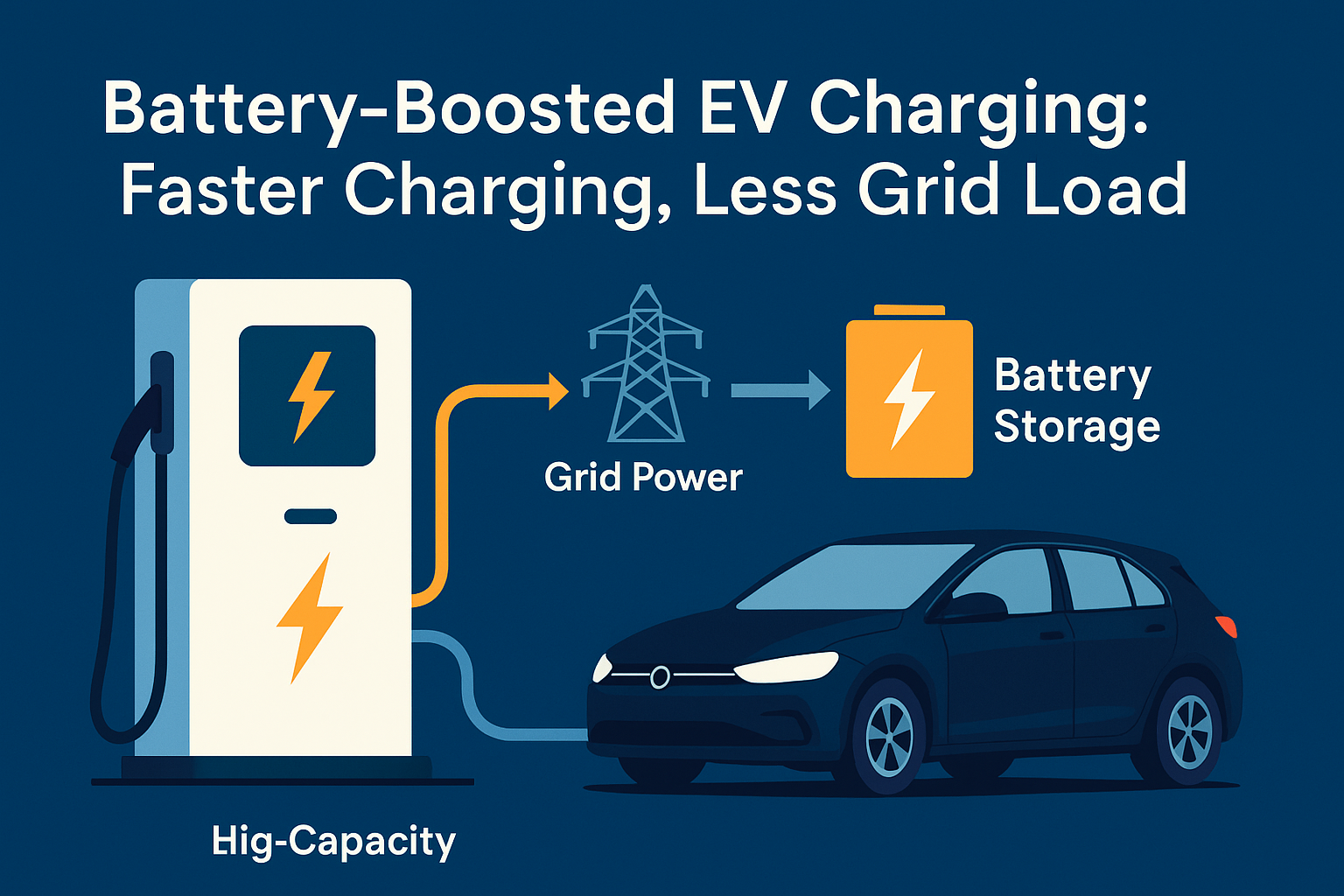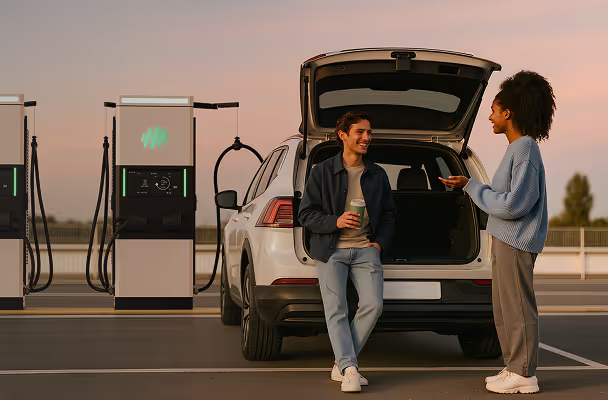What is Battery-Boosted EV Charging

Battery-Boosted EV Charging refers to an EV charging system that incorporates onsite energy storage (batteries) to complement or buffer grid power, enabling high-speed charging even in areas with limited or constrained grid capacity.
By combining a battery energy storage system (BESS) with a traditional EV charger, this approach:
- Bridges the mismatch between peak charging demand and available grid supply.
- Reduces strain on the local grid.
- Enables rapid deployment of high-capacity chargers without waiting for grid upgrades.
How Does It Work?
A Battery-Boosted EV Charger (BBEC) operates in hybrid power mode, sourcing energy from both:
- The AC grid, when available or during low-demand hours.
- An integrated or co-located battery bank, charged during off-peak times or via renewables.
Typical Operation Flow:
- Battery Charging
- During off-peak grid hours or when solar/wind energy is available, the system charges the battery at a manageable rate (AC → DC via rectifier).
- Optional: Charging powered by solar inverters (PV → DC → Battery).
- EV Charging (Boost Mode)
- When an EV plugs in, and high power is required (e.g., 150–350kW), both the grid and battery discharge energy simultaneously.
- Or, the battery alone powers the charger during high-demand periods.
- Energy Management System (EMS)
- Monitors real-time demand, SoC (state of charge) of the battery, energy tariffs, and grid availability.
- Optimizes when to draw from grid vs. battery, and manages peak shaving and load balancing.
Typical Operation Flow:



